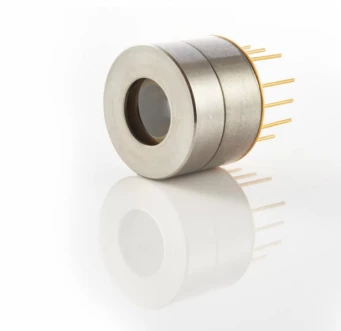Description
The PVI-2TE-4-1×1-TO8-wAl2O3-36 is a state-of-the-art infrared photovoltaic detector designed by VIGO System S.A. This advanced device is engineered with a sophisticated HgCdTe heterostructure, ensuring optimal performance and stability. It operates within the 2.4 – 4.3 µm spectral range and is specifically optimized for peak performance at 4 µm. The detector is equipped with a two-stage thermoelectric cooler, enhancing its efficiency and reliability in various applications.
One of the standout features of the PVI-2TE-4-1×1-TO8-wAl2O3-36 is its integration with a hyperhemispherical GaAs microlens. This design choice significantly boosts the device's performance by improving its optical immersion. Additionally, the detector benefits from a 3° wedged sapphire (wAl2O3) window, which effectively prevents unwanted interference effects, ensuring accurate and reliable measurements.
The device's performance can be further enhanced by applying a reverse bias, which increases response speed and dynamic range. However, users should be aware that while this improves high-frequency performance, it may introduce 1/f noise at lower frequencies. The PVI-2TE-4-1×1-TO8-wAl2O3-36 is housed in a TO8 package and features a compact optical area of 1×1 mm, making it suitable for integration into a variety of systems and applications.
HgCdTe (MCT) Photovoltaic Detector
Specifications
| Diode Type: | HgCdTe |
|---|---|
| Wavelength Of Operation: | 4000 nm |
| Max Frequency Response: | Other / Not specified |
| Active Area Size: | Custom Size |
| Dark Current: | 1-10 nA |
| Package Type: | Custom Package |
| Built-In Amplifier: | Not Specified |
| Applications: | Sensing and Measurement |
| Spectral Response: | 2.4 – 4.3 µm |
Features
- High Performance: The PVI-2TE-4-1×1-TO8-wAl2O3-36 detector offers exceptional performance with a detectivity D* better by one order of magnitude compared to uncooled detectors of the same type.
- Wide Spectral Range: Operates effectively within a spectral range of 2.4 to 4.3 µm, optimized for maximum performance at 4 µm.
- Advanced Cooling: Features a two-stage thermoelectric cooler, maintaining the active element temperature at approximately 230 K for enhanced stability and performance.
- Enhanced Sensitivity: Integrated with a hyperhemispherical GaAs microlens to improve sensitivity and performance.
- Dynamic Range: Offers a wide dynamic range, with the ability to significantly increase response speed and dynamic range through reverse biasing.
- Fast Response Time: Features a time constant τ of ≤100 ns, ensuring rapid response to changes in input.
- Robust Design: Comes with a 3° wedged sapphire (wAl2O3) window to prevent unwanted interference effects.
- Compact Packaging: Packaged in a TO8 format with an optical area of 1×1 mm² and an acceptance angle of ~36°.
- Cost-Effective: Available with quantity discounted pricing and fast delivery options.
Applications
- Gas Detection & Analysis: Ideal for monitoring gases such as CH4, C2H2, CH2O, HCl, NH3, SO2, and C2H6 with high precision.
- Breath Analysis: Enables accurate detection of biomarkers in medical and safety applications.
- Explosion Prevention: Supports safety systems by detecting flammable or hazardous gases.
- Flue Gas Denitrification: Monitors industrial exhaust to reduce NOx emissions effectively.
- Emission Control: Ensures precise measurement of greenhouse gases and exhaust fumes for environmental compliance.
Frequently Asked Questions
What is the wavelength range of the HgCdTe Photovoltaic Detector?
Does the detector require biasing?
What is the detectivity of the detector at the peak wavelength?
What is the purpose of the sapphire window?
What applications is the detector suitable for?
Similar Products
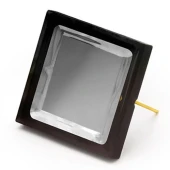


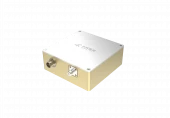
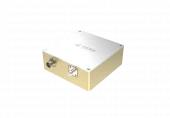
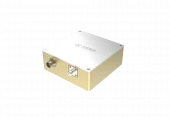

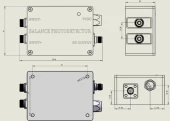
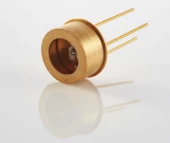
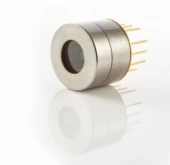
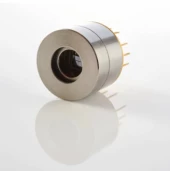
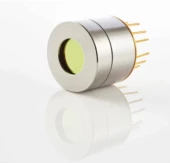
Your inquiry has been received.
Create an account by adding a password
Why create an account?
- Auto-complete inquiry forms
- View and manage all your past messages
- Save products to your favorites
- Close your account anytime — no hassle
